Community articles — Reports
Write up experiments and research with LaTeX templates for project and lab reports—including layout guidelines to help guide you through the writing process.
Recent
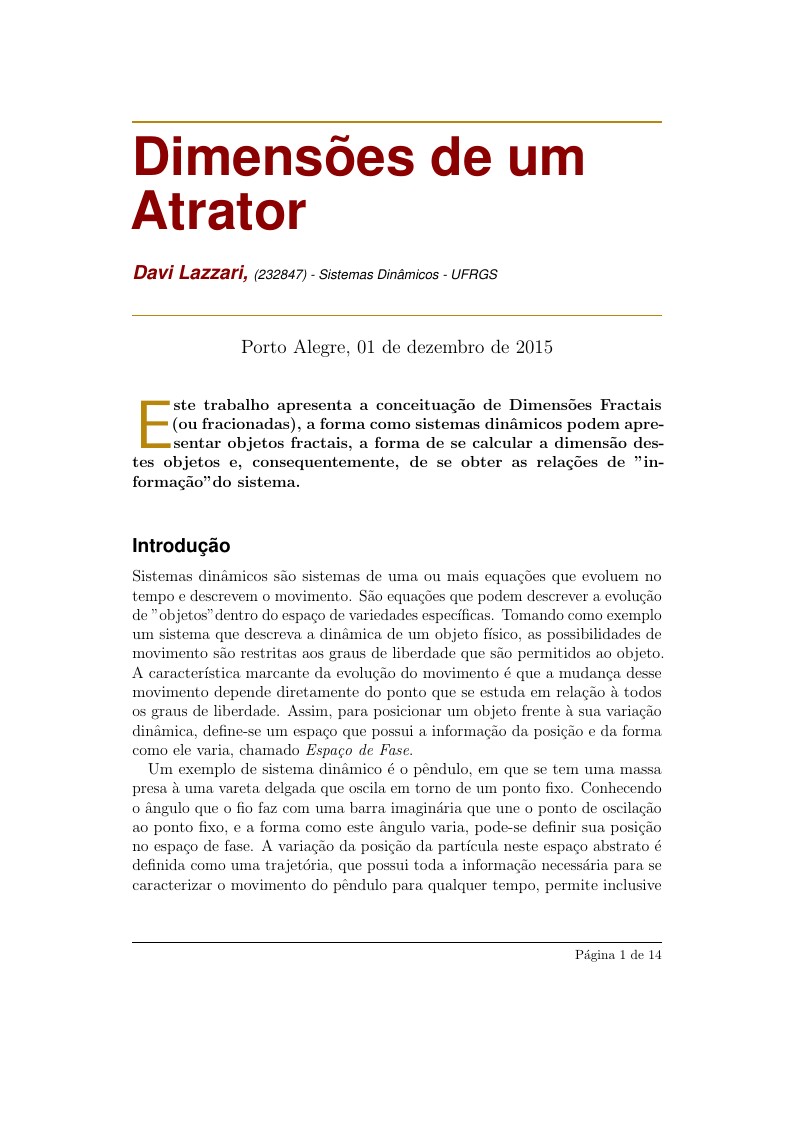
Este trabalho explica o que é um Fractal, como este se relaciona a um Sistema Dinâmico, como um sistema caótico apresenta comportamentos de dimensão fracionada e passa mostra como calcular a dimensão de atratores.
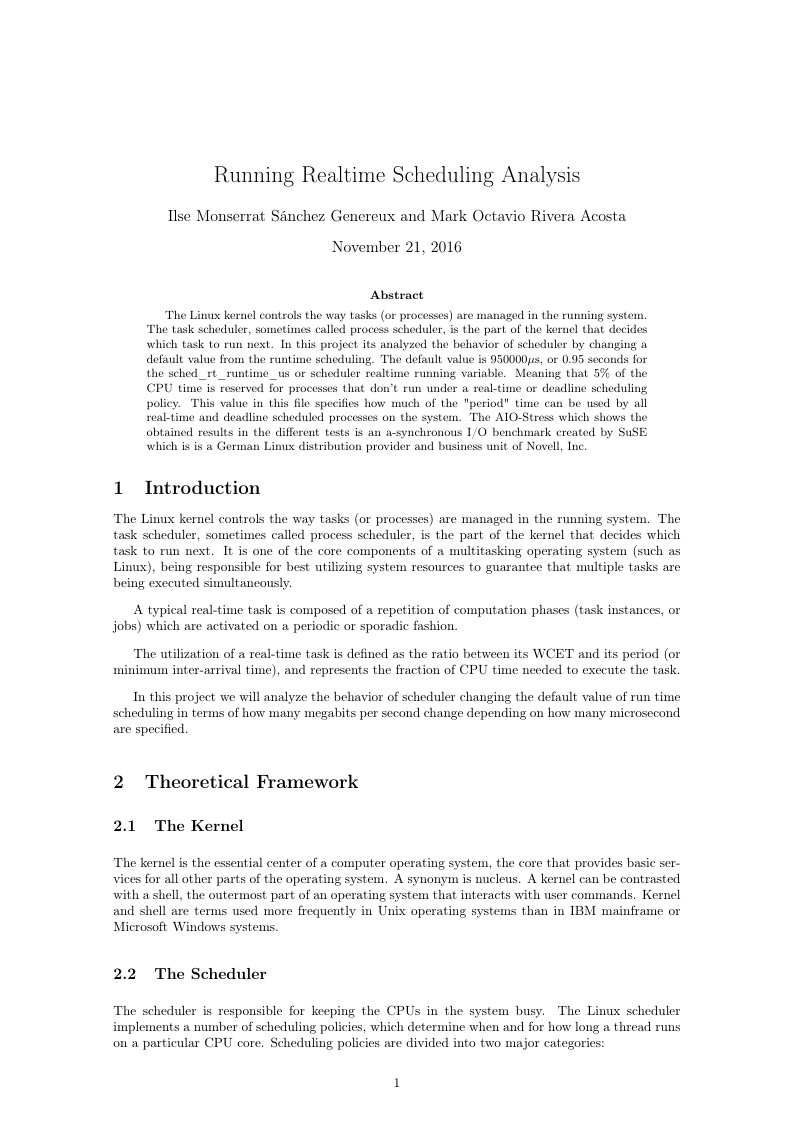
The Linux kernel controls the way tasks (or processes) are managed in the running system. The task scheduler, sometimes called process scheduler, is the part of the kernel that decides which task to run next. In this project its analyzed the behavior of scheduler by changing a default value from the runtime scheduling. The default value is 950000µs, or 0.95 seconds for the sched\_rt\_runtime\_us or scheduler realtime running variable. Meaning that 5% of the CPU time is reserved for processes that don't run under a real-time or deadline scheduling policy. This value in this file specifies how much of the "period" time can be used by all real-time and deadline scheduled processes on the system. The AIO-Stress which shows the obtained results in the different tests is an a-synchronous I/O benchmark created by SuSE which is is a German Linux distribution provider and business unit of Novell, Inc.
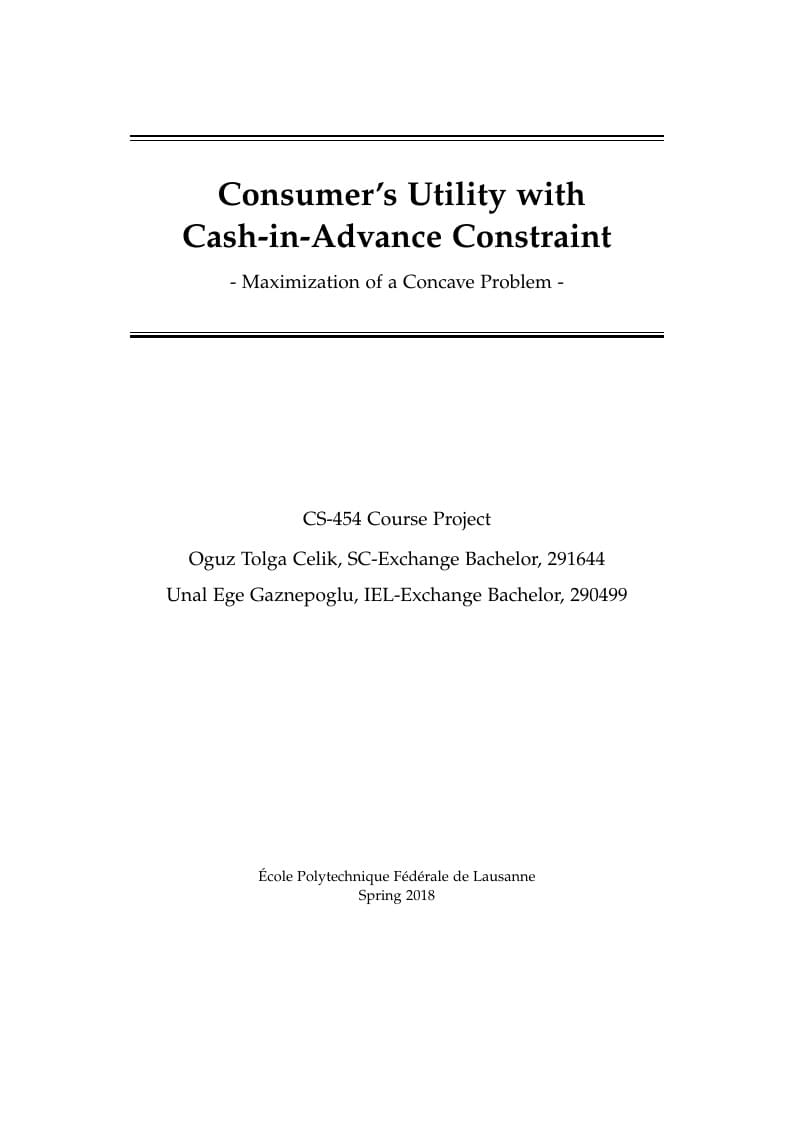
We would like to focus on a popular macroeconomics problem called Utility Maximization, where the goal is to maximize the happiness of a consumer.
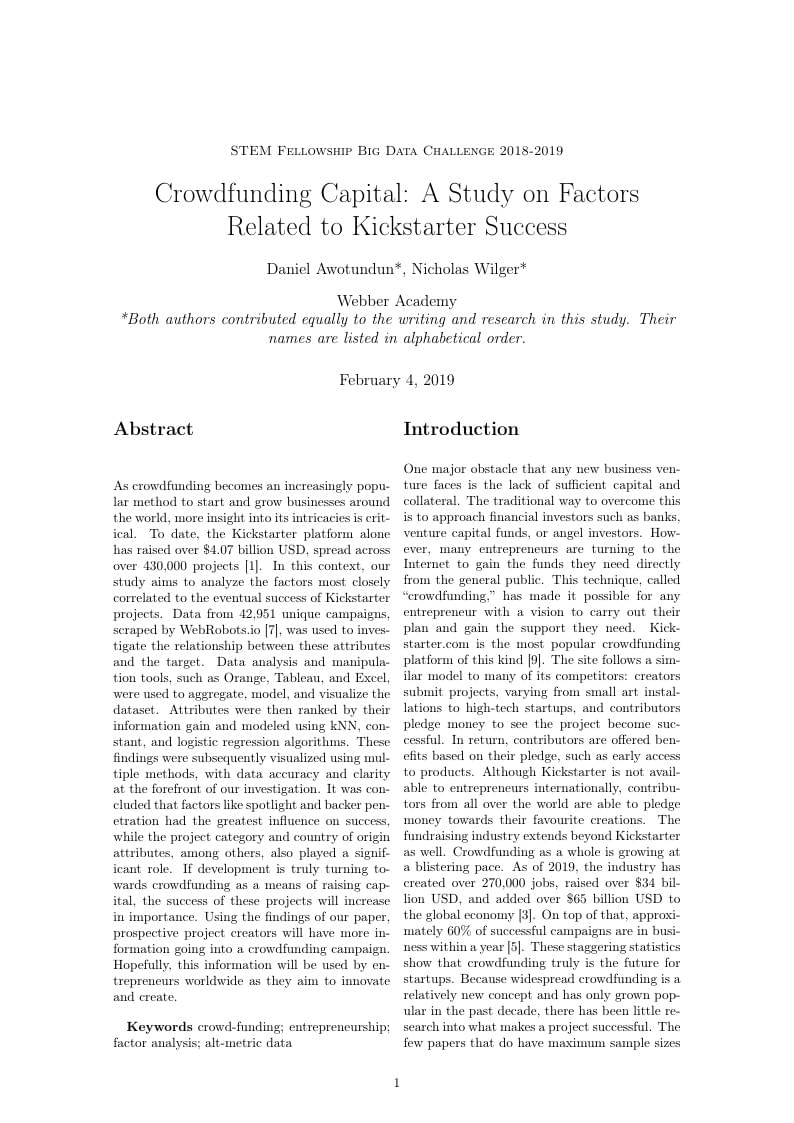
This study aims to analyze what altmetric factors affect the success of a Kickstarter campaign. This project was created by two high school students for the Big Data Challenge.
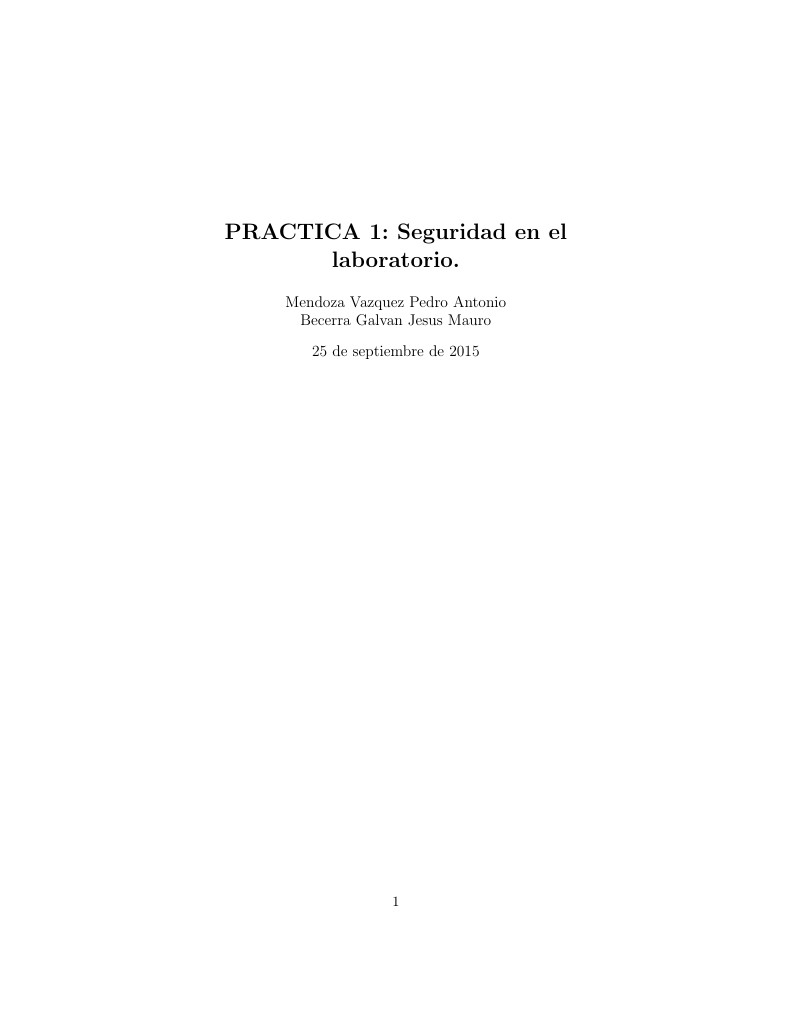
Se realizaron las correspondientes mediciones según lo que se pedía en la práctica, esto para comprobar la resistencia en un circuito paralelo de manera calculada y otra midiéndola en un circuito real. Se midió el valor de diversas resistencias observando el código de color y después de esto se midieron 10 resistencias iguales con un óhmetro para comprobar sus valores y de todos los procedimientos se saco el error absoluto, relativo y su porcentaje.
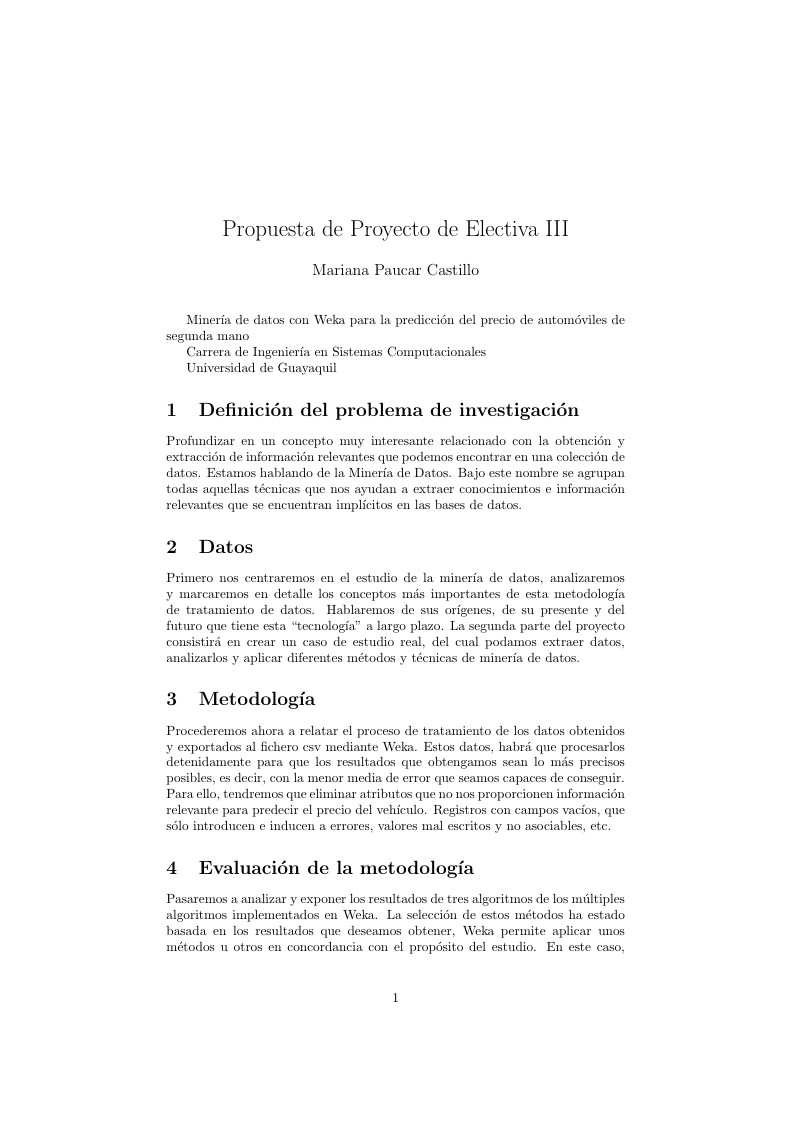
Minería de datos con Weka para la predicción del precio de automóviles de segunda mano
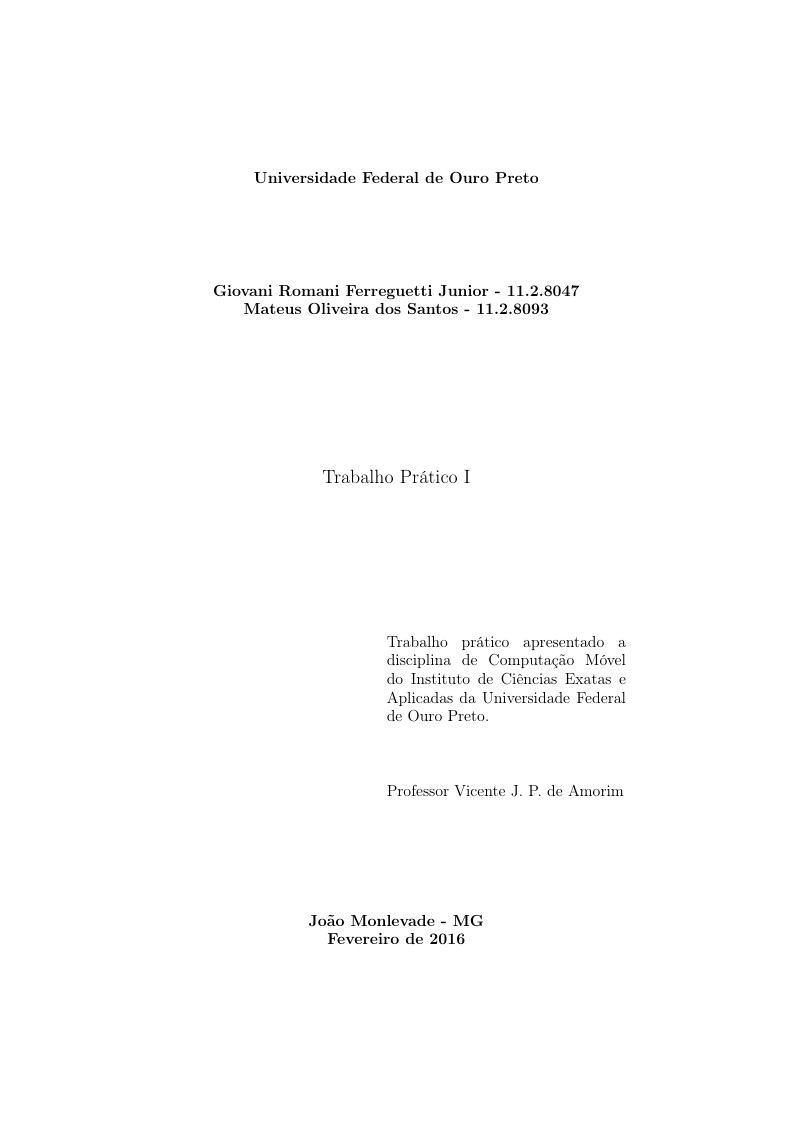
O trabalho descreve um simples aplicativo desenvolvido em para sistema android studio
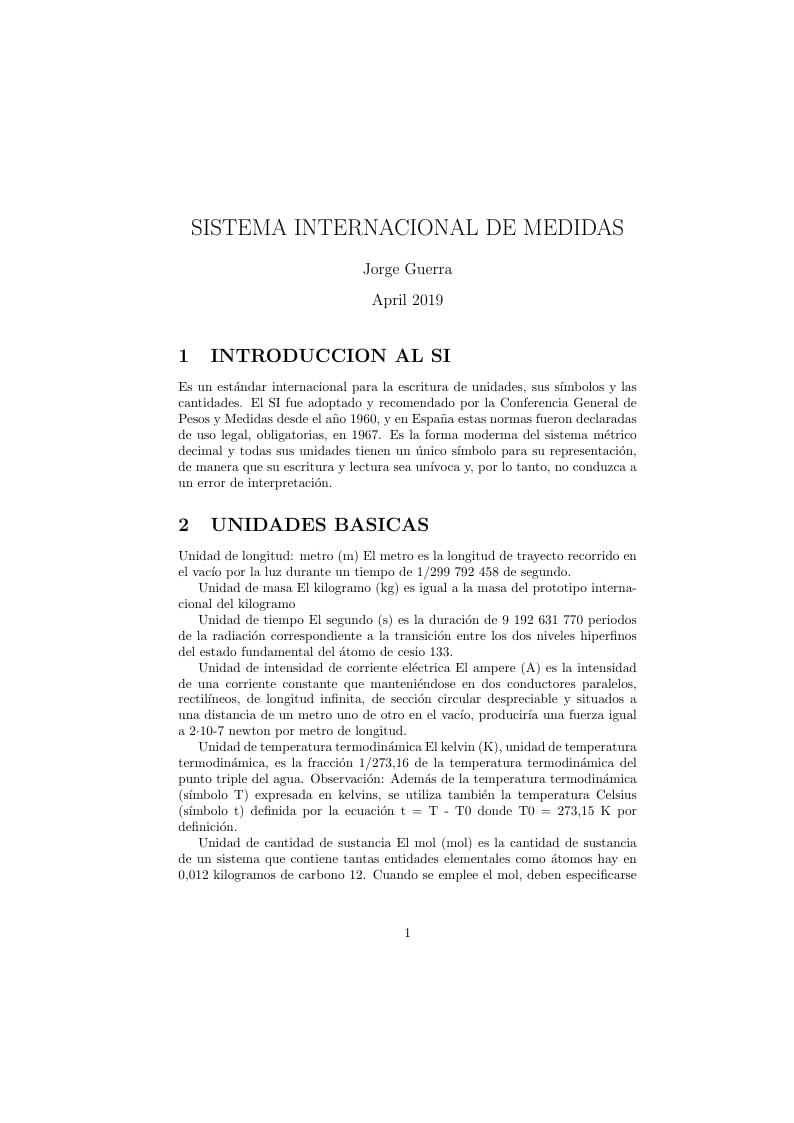
SISTEMA INTERNACIONAL DE MEDIDAS
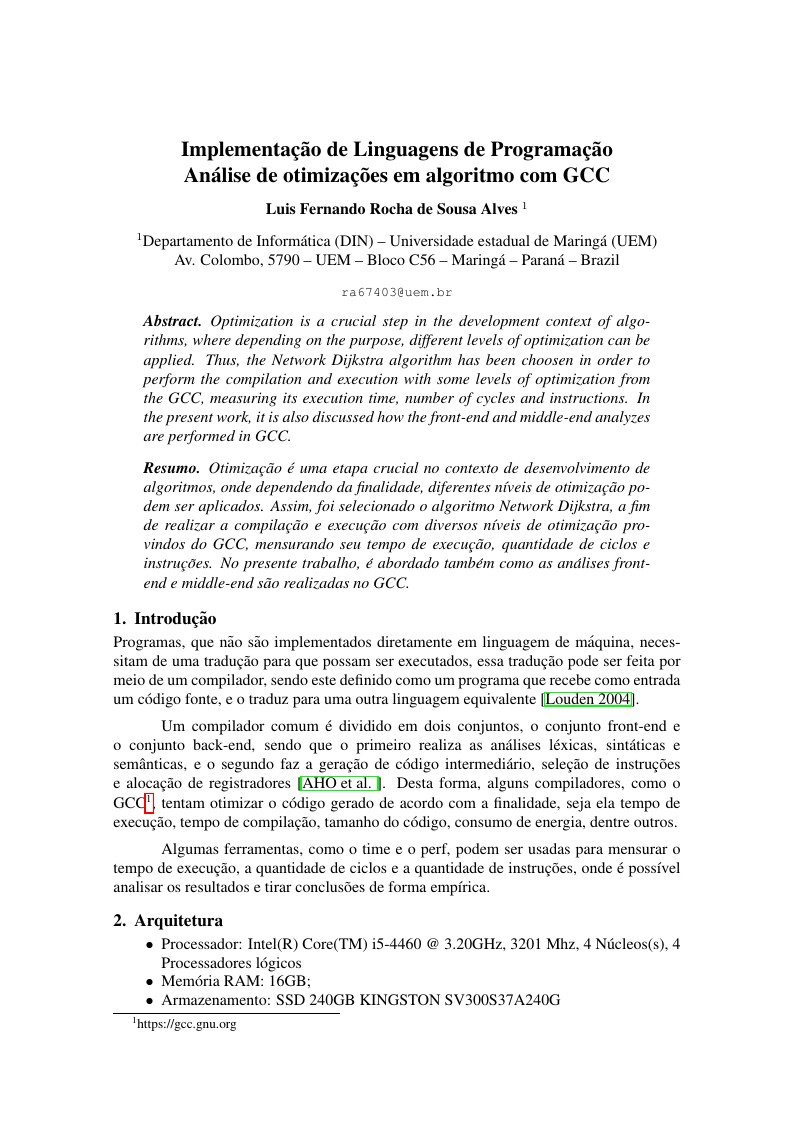
Optimization is a crucial step in the development context of algorithms, where depending on the purpose, different levels of optimization can be applied. Thus, the Network Dijkstra algorithm has been choosen in order to perform the compilation and execution with some levels of optimization from the GCC, measuring its execution time, number of cycles and instructions. In the present work, it is also discussed how the front-end and middle-end analyzes are performed in GCC.
\begin
Discover why over 20 million people worldwide trust Overleaf with their work.